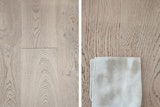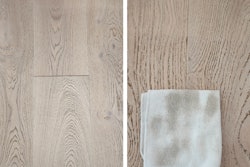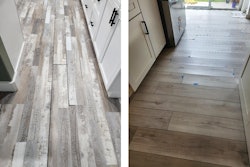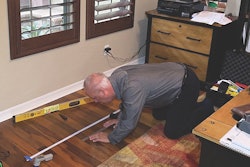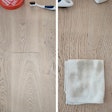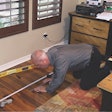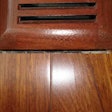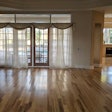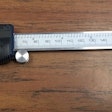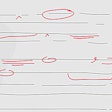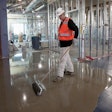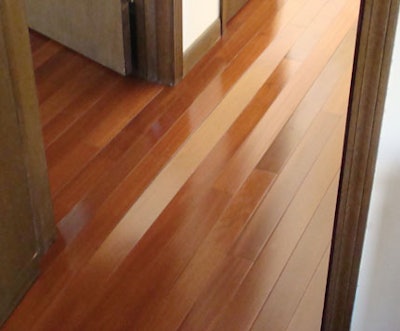
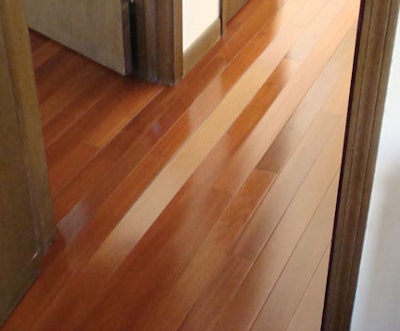 It’s all too easy for inspectors to cite an installation problem that really has nothing to do with the cause of a problem, such as this buckling wood floor.
It’s all too easy for inspectors to cite an installation problem that really has nothing to do with the cause of a problem, such as this buckling wood floor.
I might be relatively new to the inspection game—only National Wood Flooring Association Certified Professionals-certified a few years ago, and certified with FCITS not long before that—but I have been installing floors (and installing them wrong most of the time) for 13 years. The reason I became an inspector was to figure out why “all inspectors” always blamed the installer. I didn’t want to be an inspector, I just wanted to know what inspectors knew that I didn’t. That is how I realized I had gotten lucky a lot in my installation career.
That being said, I now find many inspectors aren’t doing their due diligence and are pinning the blame on the installer even when it isn’t deserved. (I’m glad the NWFA now requires inspectors to have installation experience prior to becoming an inspector.) I have many examples of incomplete or inaccurate inspections that could have cost the wrong person money. Here are two examples:
I was hired by a homeowner to inspect a floor. It was a frame house near the beach with 10-year-old floating floors. A tree fell on the home, and within hours the flooring buckled. The first inspector blamed installation, since no thresholds were used where wood met carpeting, the doors weren’t undercut and the wood was butted up to the casing. The homeowner stated he and a friend installed it 10 years ago and never had any problems before the tree fell, although no water got in the house after the tree fell. After inspecting the site, I noticed the vapor barrier under the house was insufficient and there were definitely installation issues. It would be easy to blame the installation, but I concluded it was inconclusive and recommended an engineer look at the house. The engineer determined the walls shifted after the tree fell, and the insurance company was liable for the loss. The flooring had to be replaced after the foundation was secured.
Because I have been installing floors, it was obvious to me that if the floor was installed wrong but hadn’t had problems for 10 years, then something changed in the dimensions of the room. Just because installers didn’t do “everything correct” with the install doesn’t mean what they did wrong pertains to the problem. In fact, it can be irrelevant.
Here’s another example:
A ¾-by-3-inch solid floor was nailed on a second floor over No. 15 roofing felt. Moisture testing prior to the install showed the subfloor was around 10% MC while the wood averaged 11.5%. NWFA Installation Guidelines state: “A. For solid strip flooring (less than 3 inches wide), there should be no more than 4 percent moisture content difference between properly acclimated wood flooring and subflooring materials.” The flooring was jatoba/Brazilian cherry, which acclimated for three weeks prior to the install. The flooring, which had been installed lengthwise in a hallway, buckled. Inspector A indicated the fastener schedule wasn’t followed. The NWFA Installation Guidelines states: “Solid plank ¾-by-3-inch or wider, blind fastener spacing along the lengths of the strips, minimum two fasteners per piece near the ends (1–3 inches). In addition, every 6–8 inches apart for blind nailing.”
Inspector A found the schedule at 10–12 inches … and indicated this was the reason for the failure. He found the subfloor measured 9% MC and the jatoba 15–17% MC, but there was no mention of the moisture problem in his conclusion.
The installer contacted me to refute the findings. I used NWFA technical publication No. C200: Problems, Causes and Cures, and quoted page six about buckling:
What it is: Excessive expansion causing the wood flooring to release from the subfloor.
Cause: Moisture caused by:
- Excessive job-site moisture (airborne, subfloor or flooding)
- A house left vacant with no HVAC operating or inadequate HVAC (“greenhouse effect”)
- Grade conditions
- Pipe leaks
- A wet slab
- Excessive humidity.
Excessive moisture is always the main cause of buckling. Factors that may aggravate the problem include these improper installation techniques:
• For nail-down products, inadequate nailing, incorrect fasteners, incorrect subfloor construction
The flooring had to be removed and reinstalled at the installer’s cost, even though a little bit of common sense would have dictated moisture was the cause—apparently a change in moisture after installation, with the nailing pattern possibly a contributing factor. (In fact, after the floor was replaced, it was revealed that the customer had gone on vacation for a month and set the air conditioning at 85 degrees.)
I feel many inspectors find it easy to blame installers because many installers do not know what they are doing and most don’t have the resources to fight the conclusion. I truly feel being an inspector is about improving the flooring industry as a whole. A lot of us tend to default to “the installer did it” because it is easy. But an inconclusive report is sometimes more valuable than just trying to find someone to blame.










